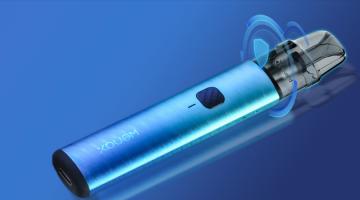Vaping Withdrawal Symptoms: An In-Depth Look

Vaping, a popular alternative to traditional smoking, has seen a surge in usage over the past decade. However, as more people turn to e-cigarettes, the issue of nicotine addiction and the subsequent withdrawal symptoms have become increasingly prevalent. This article delves into the topic of vaping withdrawal symptoms, providing a comprehensive understanding of what to expect and how to manage these symptoms.
What is Vaping Withdrawal?
Vaping withdrawal refers to the symptoms that occur after a person stops using e-cigarettes or other vaping devices. These symptoms arise because nicotine, the addictive substance in e-cigarettes, alters the brain's chemistry, making it feel like it needs nicotine to function properly. When a person stops vaping, the brain has to adjust to not having nicotine, leading to withdrawal symptoms. These symptoms can be uncomfortable and sometimes severe. Within the vape quitting timeline, the first week after quitting is often the most challenging.
Understanding Vaping Withdrawal Symptoms

Vaping withdrawal refers to the physical and psychological symptoms that individuals experience when they stop using e-cigarettes or other vaping devices. These symptoms arise due to the body's dependence on nicotine, an addictive substance found in e-cigarettes. When a person abruptly stops vaping, the body has to adjust to the absence of nicotine, leading to a range of withdrawal symptoms. These symptoms can vary in intensity and duration, depending on the individual's level of nicotine dependence and their overall health. Here are some common vaping withdrawal symptoms:
1. Nicotine Cravings
One of the most common withdrawal symptoms is a strong desire to vape or use nicotine. These cravings can be intense in the first few days after quitting and can be triggered by situations, environments, or emotions associated with vaping.
2. Irritability and Mood Swings
Nicotine withdrawal can cause feelings of frustration, irritability, and mood swings. These symptoms occur as the brain adjusts to the absence of nicotine.
3. Anxiety and Depression
Some individuals may experience anxiety, restlessness, or feelings of depression during nicotine withdrawal. These symptoms are due to the changes in the brain's chemical balance when nicotine is removed.
4. Difficulty Concentrating
Nicotine affects neurotransmitters in the brain that are involved in focus and concentration. When a person stops vaping, they may find it difficult to concentrate.
5. Sleep Disturbances
Nicotine withdrawal can disrupt sleep patterns, leading to insomnia or changes in dreaming.
6. Increased Appetite and Weight Gain
Nicotine can suppress appetite and increase metabolism. When a person stops vaping, they may experience an increased appetite and slower metabolism, leading to weight gain.
7. Physical Symptoms
Some people may experience physical symptoms such as chest tightness, constipation, or flu-like symptoms. These symptoms occur as the body adjusts to the absence of nicotine.
8. Cognitive and Sensory Symptoms
Some individuals may experience changes in their cognition and senses, such as difficulty remembering or processing information, or a heightened sensitivity to smells and tastes.
It's important to note that these symptoms are temporary and will decrease over time as the body adjusts to the absence of nicotine. The first week after quitting is typically the most challenging, but symptoms generally start to improve after that. Various strategies, including nicotine replacement therapy, medication, counseling, and lifestyle changes, can help manage these withdrawal symptoms and support individuals in their journey to quit vaping.
Managing Vaping Withdrawal Symptoms

Successfully managing vaping withdrawal symptoms can greatly increase your chances of quitting for good. Here are some common methods that can help:
1. Nicotine Replacement Therapy (NRT)
NRT provides you with controlled doses of nicotine without the harmful chemicals found in e-cigarettes. Available in various forms such as patches, gum, lozenges, nasal spray, and inhalers, NRT can help reduce cravings and ease withdrawal symptoms. The FDA provides more information on the different types of NRT available.
2. Prescription Medications
Certain prescription medications can help with nicotine withdrawal. For example, Bupropion (Zyban) and Varenicline (Chantix) are FDA-approved medications that can help reduce cravings and withdrawal symptoms.
3. Counseling and Support Groups
Behavioral therapy, counseling, and support groups can provide you with the tools and strategies to cope with cravings and deal with withdrawal symptoms. They can also offer encouragement and motivation to stay nicotine-free.
4. Physical Activity
Regular physical activity can help distract you from cravings, reduce withdrawal symptoms, and improve mood. Even short bursts of physical activity, such as walking or jogging, can help.
5. Healthy Eating and Hydration
Eating a balanced diet and staying hydrated can help manage withdrawal symptoms. Some people find that certain foods, like fruits and vegetables, make cigarettes taste bad, reducing cravings.
6. Mindfulness and Relaxation Techniques
Practices like meditation, deep breathing, yoga, or progressive muscle relaxation can help manage stress and reduce cravings.
7. Cold Turkey
Some people find success in quitting vaping all at once, or going "cold turkey". This method requires a strong willpower, as withdrawal symptoms can be intense in the first few days.
8. Delay Technique
If you feel the urge to vape, delay it. Wait for 10 minutes and distract yourself with something else. This can help the craving to pass.
9. Avoid Triggers
Certain situations, environments, or activities may trigger your urge to vape. Identifying and avoiding these triggers can help manage cravings.
10. Reach Out for Support
Don't hesitate to reach out to friends, family, or a support group when you're struggling with cravings or withdrawal symptoms. They can provide encouragement and help you stay on track.
11. Reward Yourself
Quitting vaping is a big achievement. Reward yourself for reaching milestones (like 1 week, 1 month, 6 months, etc. without vaping) to stay motivated.
12. Stay Positive
It's important to maintain a positive mindset. Remember, withdrawal symptoms are temporary and will decrease over time. Every day you don't vape is a step towards better health.
13. Exploring Further Health Risks Associated with Vaping
While this article focuses on the withdrawal symptoms associated with quitting vaping, it's also crucial to be aware of other potential health risks linked to vaping, particularly when involving cannabis products. For instance, a condition known as Cannabis Hyperemesis Syndrome (CHS) has been identified, which can be exacerbated by the use of cannabis, including through vaping. CHS is a condition characterized by chronic cannabis use leading to repeated bouts of nausea and vomiting. It is diagnosed based on specific criteria, detailed in the cannabis hyperemesis syndrome ICD 10 classification. This addition to our discussion serves as a reminder of the importance of being fully informed about the potential consequences of vaping, especially when it involves substances like cannabis.
According to experts who write for us on vaping, everyone's experience with quitting vaping is unique, and what works for one person might not work for another. It's important to find a method or combination of methods that work best for you. It's okay to ask for help, and it's okay if you don't quit on your first try. Many people make several attempts before they quit for good. The important thing is to keep trying and find what worksbest for you.
FAQs About Vaping Withdrawal Symptoms

How long does vaping withdrawal last?
Vaping withdrawal symptoms can start within a few hours to a day after quitting and peak around the third day. These symptoms gradually decrease over the following three to four weeks. Therefore, it may take around a month to break the nicotine habit. However, cravings for nicotine can persist for several months after quitting.
What to expect after you quit vaping?
Quitting vaping can lead tovarious immediate and long-term health benefits. Within 20 minutes of quitting, heart rate and blood pressure drop, and circulation starts to improve. After 24 hours, the risk of heart attack starts to decrease. After two days, the senses of taste and smell begin to improve. After three days, nicotine is completely out of the body, and withdrawal symptoms peak. After a month, lung capacity improves, and there's noticeably less shortness of breath and coughing. Over time, the risk of heart disease, stroke, and various cancers decreases significantly.
Can I quit vaping cold turkey?
Yes, quitting vaping cold turkey, or abruptly stopping, can be an effective method. A poll conducted on a Reddit "quit vaping" support group found that over half of the respondents who had quit vaping and remained nicotine-free for at least three months had used the cold turkey method. This method involves complete cessation of nicotine intake, leading to peak withdrawal symptoms within 72 hours.
Can your body recover from vaping?
Yes, the body can recover from vaping. Once a person quits vaping, the body begins to heal. The heart rate and blood pressure normalize, the lung capacity improves, and the risk of heart disease and stroke decreases. The body's ability to fight infections also improves. However, recovery takes time and the process can be challenging due to withdrawal symptoms. The CDC provides more information on the health benefits of quitting.
What are the immediate benefits of quitting vaping?
Within 20 minutes of quitting, your heart rate returns to normal, your blood pressure drops, and your circulation starts to normalize. Your breathing may improve as well, as the key ingredients in an e-cigarette produce chemicals when heated that are detrimental to your respiratory tract. When you quit vaping, your breathing becomes less labored and your airflow is clearer.
What are the long-term benefits of quitting vaping?
Long-term benefits of quitting vaping include reduced risk of heart disease, stroke, and various cancers. After a decade, lung cancer risk is reduced by 50 percent, as well as the risk of pancreatic, mouth, and throat cancer. After 15 years, your risk of developing coronary heart disease becomes the same as a nonsmoker's.
Conclusion
In conclusion, while vaping withdrawal can be challenging, the benefits of quitting are numerous and significant. It's never too late to quit, and there are resources and support available to help you on your journey to becoming vape-free.
More to Read:
Previous Posts:
Next Posts:









